FeatureIt's a story told over and over around the country, the local hero who was on the fast track to the top, only to get derailed by injury. Regardless of geography, we in the motocross community have heard, told, or experienced the success and bad luck that brings a young racer's dream to a screeching halt. Sometimes its financial, perhaps other times circumstance, but far too often its injury and age that sends many of us down a parallel road close to our dream but not quite all the way to our intended destination. This is the story of Mike Willey.What's different about Mike Willey isn't ready to submit to injury, circumstance, or financial limitations. In fact the only thing he has going for him is his age, his talent, and his never-ending drive to succeed. He's looked down the long road ahead, even entertained the idea of modifying his dream to remain "involved with the industry." He's taken that fork in the road, but seems to have found a detour, a detour that may very well lead him down the road to success and eventually back to the original design of his motocross dream.Mike started racing in Michigan back in 1996 thanks to some very talented neighbors we know as the Whitmores. Sarah, her dad, Terry Sr., and Terry Jr. played a huge part in getting Mike into the community of motocross. Just image getting riding tips from the Whitmore family, not to mention having Terry Sr. wrenching on your bike. Of course at the time Sarah wasn't one of the fastest female racers in the world and her dad was just, well, the guy down the road who was really good at fixing bikes. Regardless, Mike had some great help when he got started and as we'll find out later, had some other talented individuals that shaped him into the rider he is today. It didn't hurt that Mike lived in one of the top three states to produce Loretta Lynn's Champions either. Motocross is huge in Michigan considering that 4 months out of the year everyone's tracks are covered in snow.Racing in the 80cc 7-11 class, Mike chalked up a 4th place at his first race on a track in Kingsley, Michigan. He went on to get a second place in the Bay Racing Series only to have his neighbor Sarah Whitmore, remember her, clinch the 1st place spot. The following year Mike occupied the top of the podium and then moved up to the 80cc 12-15 class. Mike enjoyed many victories over the next couple of seasons and eventually worked his way "downstate", as they say in Michigan, to the tougher tracks and even tougher competition. Mike faired well but due to a lack of attendance at District 14 races, he didn't grab a District 14 championship. It wasn't until the year 2000, that Mike tasted pure victory against tough competition.Riding 125 C class, his first year as a 125 rider, Mike traveled to Walton, Ontario and raced in the Trans Canada Grand National Championships, a popular event for many a Midwestern racer. Another native Michigan rider, Josh Woods got his big break there and Mike was hoping to lay down the groundwork for similar success by taking home a1st place trophy. Shortly thereafter, our young talented rider broke his collarbone. This would be his first roadblock, but nothing too out of the ordinary for motocross. 6 weeks after recovering from one injury, Mike sustained a broken rotator cuff and a broken wrist. Mike then started training down in Georgia at the Georgia Practice Facility. Returning in 2001, and racing 125 B, Mike qualified for Loretta Lynn's. He ended up 31st due to bad luck, a familiar story for many, and returned to Michigan to finish off the year. Remember those individuals I told you about, the ones that helped shape Mike into the racer he is today? Well his Mechanic in 2001 was Cory Shea, who coincidentally is currently Mike Brown's mechanic. Cory was responsible for helping Mike get a job in the industry after an almost career ending crash...more on that later.In 2002, along with his cousin Keith Bowen, Mike returned to Loretta Lynn's in the 125 B class only to run into the same bad luck he ran into a year earlier. Keith also competed at Loretta's doing a bit better than Mike. Keith worked with Mike through 2003 and eventually went on to wrenching full time. Currently he's working as a mechanic for Brandon Jesseman.Now this story sounds very familiar to many of you. A young privateer struggling through bad luck and injuries, only to press on trying to fulfill his motocross dream. So what makes Mikes story so special? Well, nothing. That's just it. Mike's unique story is just like everyone else's. That's the whole point, but the best is yet to come.Still in 2002, Mike qualified at Ponca City, raced Lake Whitney, traveled shortly thereafter to the GNC Nationals in Mosier Valley, Texas, and then finished out the year at the Mini O's in Gainesville, Florida. How did he do? Not bad, but not good either. As everyone one knows, these races are tough and the competition is tight. Mike had been training hard but results were not to his liking. Traveling back to Georgia to put in more time, Mike resumed racing at the Winter Am Series in Florida. He took a 4th at the first stop, but it was the second race that makes this story so interesting. In the first moto, at the second stop in Dade City, Florida, on January 4, the day after Mike's birthday, Mike was leading going down a rough straight away in front of a some guys named Lichtle, Chisholm, and Skinner. It was that straight away where Mike suddenly had that rude awaking that nobody in motocross likes to confront: the realization that we're all human. And as we all know, humans and motocross tracks when thrown together in the wrong time and place can lead to some pretty horrible outcomes. It was on that day, January 4, 2003 that Mike not only broke his femur and cracked several vertebrae in his lower back, but he now had to think long and hard about his racing future.Recovery from an injury like that sustained in Dade City is a rough uphill road. A broken femur is one thing. You have surgery, rehab, and maybe a rod that runs right down the middle of the biggest bone in your body. Add to that a few broken vertebrae and the guarantee that you won't be walking for a good 9 months, now you have the exclamation mark at the end of a really bad streak of not-so-good luck. Doing the math, most of 2003 was spent off the bike. You get a lot of time to think when you're recovering. When you have 9 months to think, the wrong things tend to sneak into your head. You start second guessing yourself, the way you ride, whether you should still race, and then you start to worry about whether or not your going to be able to race or even ride at all. 9 Months is a long time, perhaps too long. Mike, like many privateers, has friends and family that want him to succeed. After being almost fully recovered Mike decided to get back on a clapped out 250f and go back to where his racing career started, and as luck would have it, he forgot his AMA card and his bike broke down. Lucky for him, he had a friend with an AMA card and a bike that already ran in the morning program and was willing to "loan" it to Mike...just for the afternoon. So Mike ran the B class just to get his feet wet and all but passed the first place A class rider, who by the way left on the first drop. Not bad for a guy who quite literally just got off the couch.Remember Cory? He was Mike's old mechanic? Well, Cory called Mike with a job offer. Since August of 2004, the now nearly recovered racer had been working down in Florida doing storm work after an unusually overactive Hurricane season. His dad was the General Manager of a power line company that spent the better part of late summer, all of the fall, and most of the winter restoring power to the folks in Florida. Mike was making great money but his heart was still into racing. Nearly 2 years after his accident in Dade City, Cory offered Mike a job slinging tools for Vernon McKiddie, a 125 east Supercross rider racing under the Maestro Suzuki banner. Well, if he couldn't race, why not wrench? He'd still be submerged in the industry just not as a rider...almost a dream come true. Like every racer, it's better being the guy on the bike and in the race rather than the guy working on the bike and watching from the mechanic's area. The difference between Mike and the other guys waving pit boards was that Mike was better at riding than wrenching. Oh, he could hold his own but again, his heart was on the track. At the end of the Supercross season, Mike decided to go back to work with his dad down in Florida. Why not work through the Nationals? Why not stay put? Because as a mechanic, his dream hadn't come true. He wanted to be on the bike and the only way to do that was to earn some money, train hard, and get back into racing.That brings this story to present day. Everyone who races has heard the same story. The name might be different, the injuries may be in different places, and the timeline might be a whole lot longer. Mike represents every privateer that has struggled down the unpaved road to being a professional motocross racer. Recovering from an injury at the peak of a pro career is no easy task. As a privateer, that same task is nearly impossible. It is here where the spirit of motocross is now defined. Does Mike have a shot at being a pro motocross racer? The answer to that question is in the heart of every privateer looking for a spot on a factory-supported team. The answer is in the heart of every pro that's returned from that career ending knee injury. The answer is at the top of that long uphill road to recovery.DR Tested****Gaerne SG10 BootsThe Gaerne SG-10 is probably the best "out of the box" boots I've ever tested. Gaerne has been developing the SG-10 for well over a year now and the time spent on product development shows. This boot is a pure example of form following function.Upon first inspection, I noticed how the Italian designers took a very aggressive styling approach utilizing a great combination of function in a very appealing package. Each color option maintains a traditional monochromatic look with the SG-10 Carbon offering a contrast of white and printed carbon fiber. Other functional styling cues include an extension on the heal for the all important holeshot 3rd gear heal click, extra calf protection incorporated into the hinged ankle support, and smartly placed grip areas for proper bike control. Regardless of the color, the SG-10 is a great looking boot.It sounds too good to be true but while unfastening the easily adjustable aircraft aluminum buckles; I quickly discovered the best part of these boots. After slipping them on I immediately commented on the fit. This complicated looking boot transformed into something as simple as a beach sandal. Put your foot in, adjust the buckles, and then go ride. Simple. Works just as well in reverse. Another nice feature was the quick break in period. At first they seemed stiff and ridged, but once on the bike, they were very flexible. In fact, after a solid day of riding, the memory foam interior liner took shape to my ankle. I also noticed the design of the boots prevented annoying hot spots usually caused from bunched up leather and the foot beds could have doubled as a pillows. My only complaint was the toe seemed boxy which slightly affected shifting, but after a few motos, this no longer became an issue. While riding, I felt very comfortable with my foot out in the "snap-your-ankle-zone" due in part to the wishbone pivot system. The boot has great lateral protection while not limiting back and forth ankle motion. The SG-10 seems rigid at first but once they're on, they're light and nimble. I was also pleased with how knee-brace friendly Gaerne made the SG-10 boots. Bulkier braces are always going to be...well...bulky, but knee/shin guards and low profile knee-braces work very well with these boots.Durability was never an issue. The SG-10 seemed to hold up really well to a few months of practicing, racing, trail riding, and standing around. The boots showed typical wear in the toes and instep, however even the soles seemed to hold up well to dirt, sand, brake pedals, kick-starters, and footpegs. After riding, I was pleased to see how easily the boots cleaned up. The top grain leather seemed to handle a few days of good hard riding and offered easy clean up after some very messy mud races. Expecting the typical white boot fade to "dirty" white, the only locations that seemed to really stain were crease areas and the stitching in the sole.Finally there's the price. Gaerne has strategically priced these boots well within reason. I would love to see them a little cheaper, but Gaerne's price is highly competitive price. Expect to pay around $335 dollars for a new pair of Gaerne SG-10 boots even though in January the suggested retail was $289.Now you're probably waiting for the other shoe...err...boot to drop. Well here it is. Everyone's foot is different. There's no guarantee that the SG-10 will fit as well for you as it did for me. With any purchase of gear, I highly recommend you find a dealer and try them on. Proper fit can only be achieved if you try something on. So get out there and try on a pair. As far as I'm concerned, you can't go wrong with the Gaerne SG-10 boots.
Latest
/cloudfront-us-east-1.images.arcpublishing.com/octane/EXJM3ZOP5JGOFL2BNU2G6KCGX4.jpg)
/cloudfront-us-east-1.images.arcpublishing.com/octane/2VHGWMYT4RE33JOHF3ATQ4CWBY.jpg)
/cloudfront-us-east-1.images.arcpublishing.com/octane/MAA7CTOAVJEH5H5QNC45LBIHPM.jpg)
/cloudfront-us-east-1.images.arcpublishing.com/octane/NOJSQ77E2BHR3IMKEJPCENML4A.jpg)
/cloudfront-us-east-1.images.arcpublishing.com/octane/B5QDMPSPWRA3RBBQJUC4FNI4JI.jpg)
/cloudfront-us-east-1.images.arcpublishing.com/octane/B3BPW2WOCNCUZPL2QVICQUC4VU.jpg)
/cloudfront-us-east-1.images.arcpublishing.com/octane/MLFO3UACYFHHLLP7WUYGUCFCBI.jpg)
/cloudfront-us-east-1.images.arcpublishing.com/octane/RS3JKVKIG5H2TFBCQXCLFWSJ6Q.jpg)
/cloudfront-us-east-1.images.arcpublishing.com/octane/6ONR4CR3FBB5PDN5SQPFB36CSI.jpg)
/cloudfront-us-east-1.images.arcpublishing.com/octane/3GF26TF5YVFIJCHZJMYTMWIPPY.jpg)
/cloudfront-us-east-1.images.arcpublishing.com/octane/QSWIPGJUFNAENBSGFG5ASKGUCY.jpg)
/cloudfront-us-east-1.images.arcpublishing.com/octane/JEB56YXHFZDYRBTQRSUPSIQT4E.jpg)
/cloudfront-us-east-1.images.arcpublishing.com/octane/2U42JYK7ZVCK5FISIIFYDLMFQY.jpg)
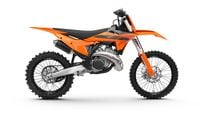
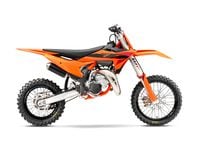
/cloudfront-us-east-1.images.arcpublishing.com/octane/2F2YWJRM4ZDCBEBIHI6HAZXI5U.jpg)
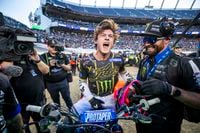
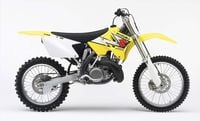
/cloudfront-us-east-1.images.arcpublishing.com/octane/I37LN27L3ZHRHO6DZRHHBLBCZQ.jpg)
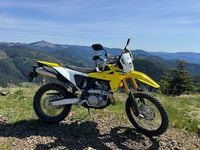
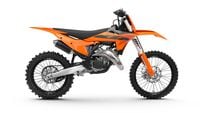
/cloudfront-us-east-1.images.arcpublishing.com/octane/77ZEF3VNXZFIHI5IUF6ZBEHEJE.jpg)
